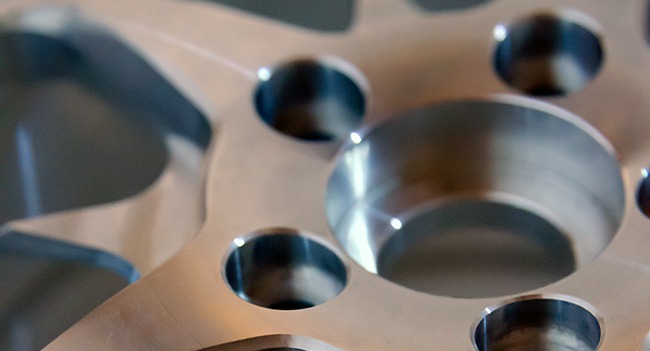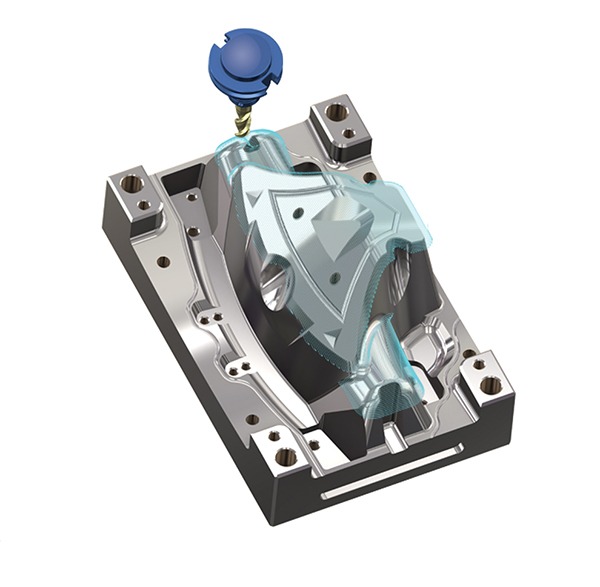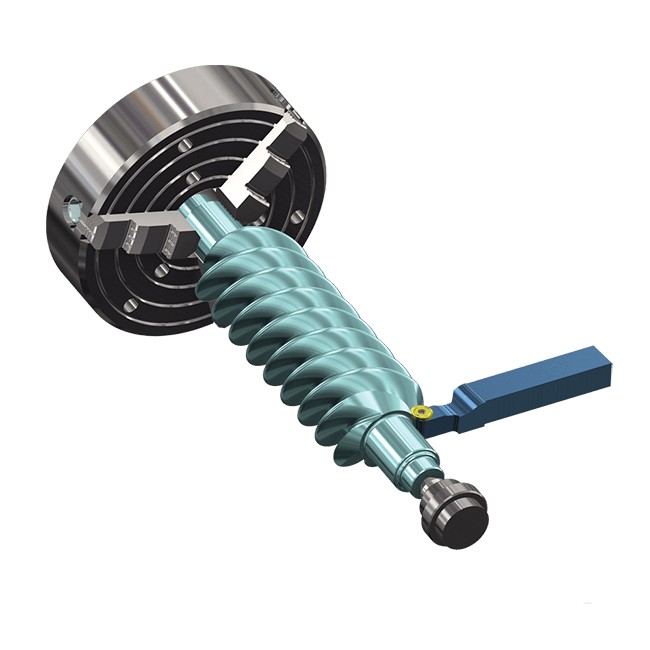
CNC milling and CNC turning are the most commonly used machining styles in any given shop. Both rely on computer numerical control (CNC) programming, which directs the movement of a cutting machine along a predetermined path. Essentially, a CNC machine uses computer programming to cut away material in a specific way. The result is a part that is accurate and repeatable.
Milling and turning differ in very important ways, though. Milling removes material by advancing a tool that rotates incredibly fast into the stock material and the moving it along that CNC-determined path. Imagine a drill moving towards a piece of wood.
Turning, however, uses a lathe machine. On a lathe, the material is what spins while a stationary tool advances into it. Imagine a clay pot being made, spinning on a pottery wheel. The main difference between CNC milling and CNC turning is which piece spins: the cutting tool or the stock material.
CNC Milling 101

CNC milling uses a cutting tool mounted on a rotating spindle to cut away material according to a plan provided by CNC software. The workpiece – or material – is mounted to a table, and either the table or the spindle moves along different axes to achieve different cutting approaches. Many machinists consider milling to be the “default” machining; most parts can be easily machined with traditional milling techniques. As such, most general, industrial, and automotive parts are made by CNC milling.
CNC Turning 101

Much like with CNC milling, CNC turning relies on a 3D digital file provided by CNC software to direct specific machine motion. The difference in how mills cut versus how lathes cut, though, means that each is best for different parts. Recall the pottery wheel. The way it functions means that the only pottery pieces it can make well are radially symmetrical ones. Lathes are the same. Parts like drill bits and pipes are best made via turning, because they are mostly radially symmetrical.
Mastercam Milling and Turning Solutions
Mastercam Mill is designed to offer full milling support for surfaces, wireframe, and solids. Its toolpaths are easily found and chosen in an easy-to-understand interface. Once chosen, they practically write themselves into the program automatically, finding the most efficient approach available. Specialized add-ons make creating particular parts easy. The Mill product even offers 5-axis tools for more advanced milling.
Mastercam Lathe offers powerful turning solutions that simplify and expedite the cutting process. Not only does it offer roughing, finishing, threading, and grooving, it also enables more advanced options like boring and drilling. Similar to the Mill product, Lathe also provides cutting-edge multiaxis support as well.
Try Mastercam for Free
Download your own free Mastercam Learning Edition demo to explore our milling and turning solutions.